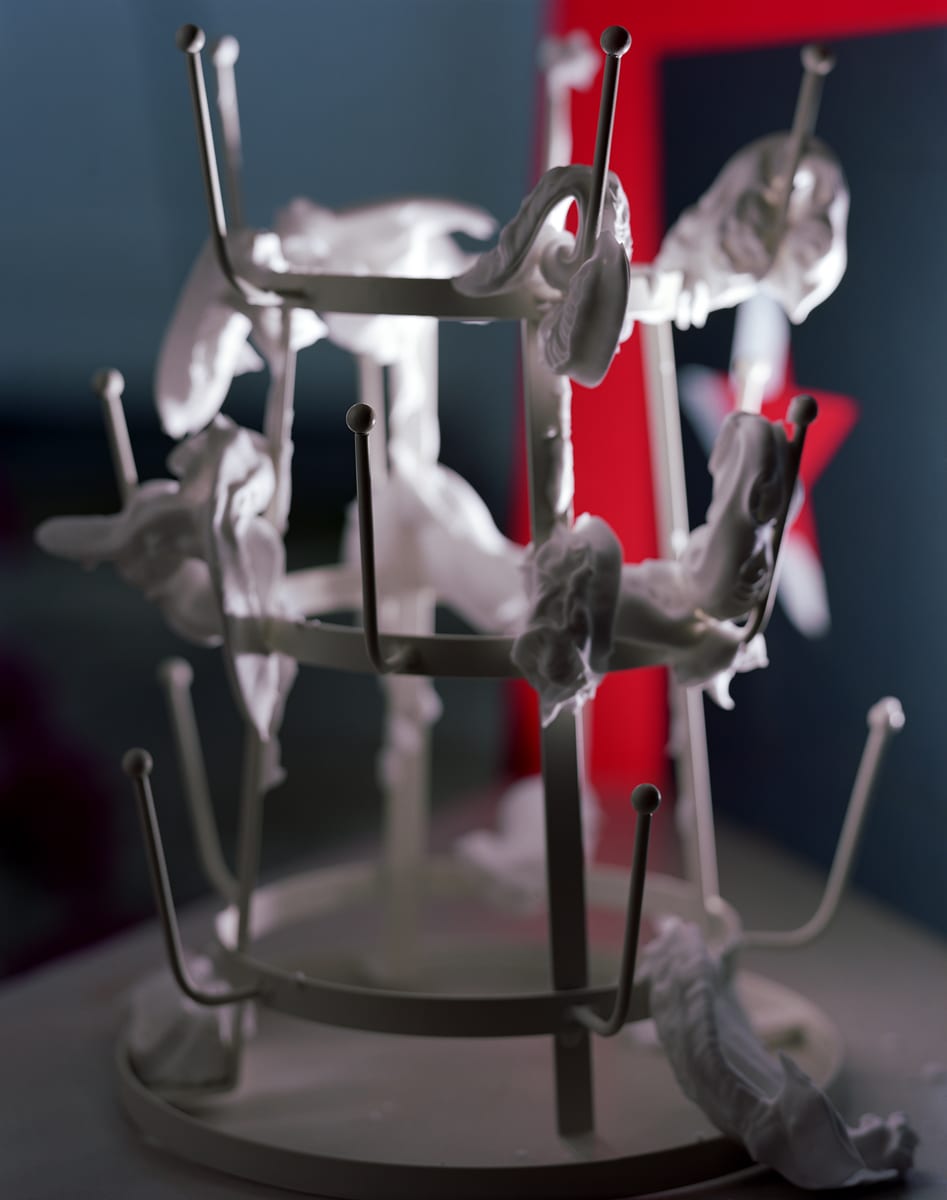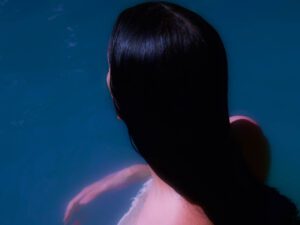“I always look to what painters do,” says Torbjørn Rødland (b. 1970), a Norwegian photographer internationally recognised for his surreal, psychologically charged images. Some of his most memorable pieces – shown in recent solo shows across Milan, London and New York – depict strange and uncanny scenes: syrup dripping from closed eyes; feet covered in sticky substances; oranges adorned with human hair. These unsettling compositions are rich in sensory information, dealing with themes of the body, consumption and artificiality.
Featured above is a shot from More Than Tongue Can Tell, the new show at Zurich’s Galerie Eva Presenhuber. A woman leans over the hood of a Mercedes, her face mirrored in the car’s glossy finish. She licks the star-shaped ornament, gazing downwards at her own reflection. This image might bring the Greek myth of Narcissus to mind: the story of a man so handsome he fell in love with his own image in a body of water. Indeed, Rødland’s oevure is full of symbolism, and Galerie Eva Presenhuber is keen to focus on its connection to art history.
Other references include Italian painter Caravaggio, whose use of light and shadow – or chiaroscuro – is evoked with strong contrast throughout. The below bottle rack is a nod to Duchamp, whose “readymade” original is an iconic piece of 20th century art. “Photography is no longer a young medium,” the artist explains. “Like painting, it can help us empower the past and reconnect with the archaic, the living mystery.”

Rødland builds on these tropes for a 21st century audience – using them to comment on how we live now. Narcissus’ pool is replaced with a mass-produced car; Duchamp’s artwork covered in shaving foam. Rødland might even be updating Caravaggio’s controversial, dramatic 16th century scenes for today’s world, in order to, as he puts it: “constitute equally complex and layered visual expressions of—and statements for—our time.”
Rødland is Los Angeles-based, and often alludes to “what we might call ‘Hollyweird’.” It’s a style that evokes David Lynch-style absurdity (Mulholland Drive, Blue Velvet, Lost Highway) and fragmented storylines, building on American myths and dreams. In the moving-image piece Elegy for the Silent, an ageing man looks out at a place that has, over time, become alien to him. Things are changing, disappearing, decaying. This is not his world anymore. “The Lamb of God still takes our sins away,” he says, as rain splashes on the sidewalk. “Taking everything I was told would last forever.” Flowers float in puddles, their pale pink blooms fading in dark water. Perhaps this is Rødland’s nod to the memento mori tradition of 17th century Dutch still life, where dying flowers represent the passage of time; the mortality of all things. The camera then takes us across a manicured garden, past pink 1950s limousines, to a beach lapped by waves. There is no beginning or end.
Across film and photography, Rødland revels in mystery and suggestion. His images ask more questions than they answer, leaving interpretation up to the viewers’ subconscious. Whilst sex and religion; tenderness and vulgarity; art and pop culture; intuition and intellect are all ideas for consideration, the artist remains “uninterested in direct political messages.” Instead, Galerie Eva Presenhuber explains, “he rather searches the past for the core of truth that is lurking just offstage.”
15 January – 20 February. Find out more here.
Images:
1. Torbjørn Rødland, Hood Ornament, 2019. Chromogenic print on Kodak Endura paper, framed. 60 x 76 cm / 23 5/8 x 29 7/8 in. © Torbjørn Rødland. Courtesy the artist and Galerie Eva Presenhuber, Zurich / New York
2. Torbjørn Rødland, Hedgehog Foam, 2019. Chromogenic print on Kodak Endura paper, framed. 76 x 60 cm / 29 7/8 x 23 5/8 in. © Torbjørn Rødland. Courtesy the artist and Galerie Eva Presenhuber, Zurich / New York





